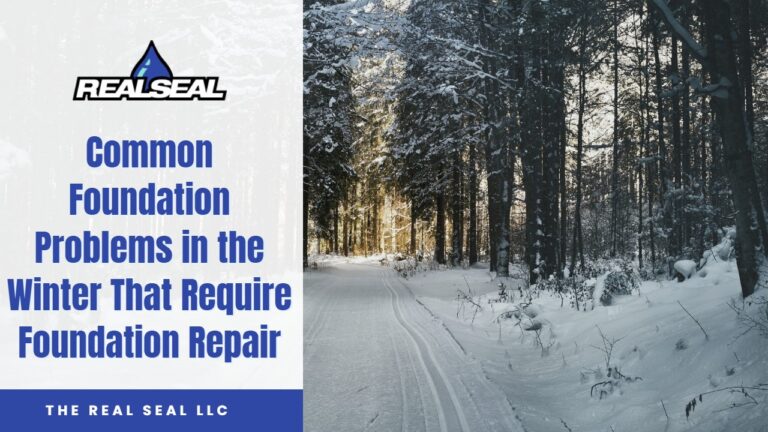Winter is here, and that means snow, ice, and sleet everywhere we look. Snow can wreak havoc on our roofs, siding, and foundation. Because no one wants a wet basement, here are some basic warning signs that you are suffering from water damage to your foundation, and how to prevent them from getting worse. The post Common Foundation Problems in the Winter That Require Foundation Repair appeared first on .
Winter is here, and that means snow, ice, and sleet everywhere we look. Snow can wreak havoc on our roofs, siding, and foundation. Because no one wants a wet basement, here are some basic warning signs that you are suffering from water damage to your foundation, and how to prevent them from getting worse.
Basic indoor warning signs that your foundation is damaged:
- A door fails to latch or is constantly jammed.
- Cracks popping up over doorways, windows, and especially where the walls meet the ceilings.
- Cracks in vinyl or ceramic tile that is installed over a concrete floor.
- Windows that have no previous problems suddenly seem to stick or won’t close completely.
Common causes of water damage:
Frost heaves
Frost can damage pavement and building structures in two ways: first, by heaving of the frozen ground caused by ice lenses forming in the soil, and secondly, when the ground collapses after these frost lenses thaw. To prevent these from affecting the building, building codes have been established that require at least 30 inches of a building’s footing depth in order to resist frost expansion.
Vertical ground shifts
Consistent freezing and thawing can cause the ground to shift between four and eight inches, on average. Variations in these numbers are normal, and can even be as high as 24 inches due to different soil and water conditions that cause cracks in your foundation’s structure.
Freezing pipes
When the outside temperature drops below 20 degrees Fahrenheit, water pipes in homes with little to no insulation are more likely to freeze and crack. Frozen pipes can cause interior flooding within a matter of seconds, since a one-eighth crack in a pipe can spew out more than 250 gallons of water every day. On average, a quarter of a million Americans have one or more rooms in their homes disrupted by bursting pipes every year.
How can you prevent water damage in the first place?
Clean out your gutters
Make sure to regularly clean your gutters to make sure they are not clogged, and that the downspouts are angled far away from the home.
Pay attention to your landscaping
All soil should be sloped away from the foundation at a rate of six inches for every 10 horizontal feet.
Protect structures
Eliminate frost heaves in one of the following ways: reduce frost penetration, keep water out of the freezing zone, or make sure soil in the freezing zone is not susceptible to frost.
Prevent burst pipes
The best way to prevent pipes from freezing and bursting is by always keeping your home’s core temperature above 55 degrees Fahrenheit.







